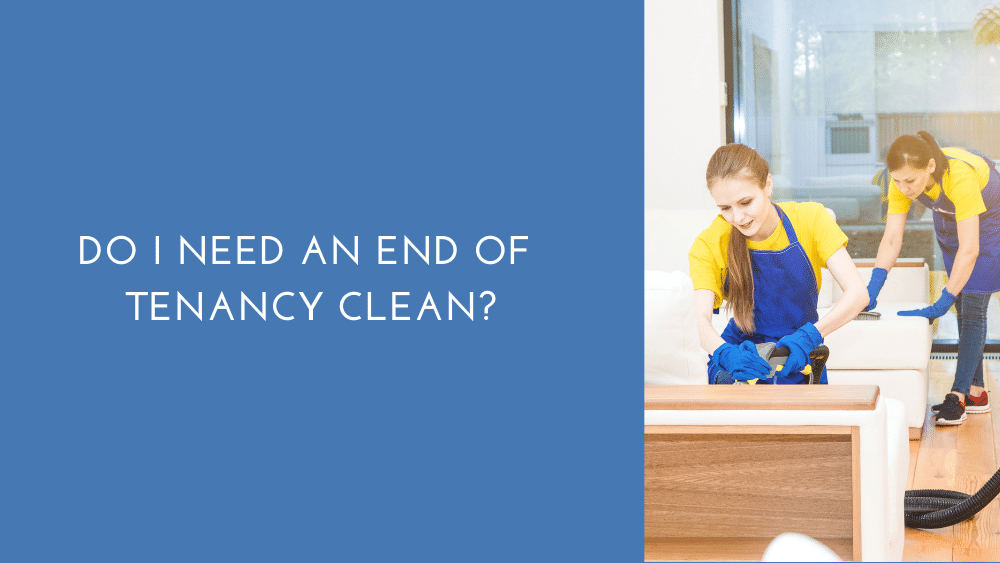
Disputes over the cleanliness of a property at the end of the tenancy period is a significant cause of the problems between tenants and their landlords, but the simple truth is it can be prevented with a proper and thorough end of tenancy cleaning.
When you enter a new house as a tenant, it has automatically become your responsibility to maintain and take care of the property. A good tenant ensures that they look after their property until the end of the tenancy and ensures that they hand over the property to its owner in the same condition they met it. So it is an undeniable fact of renting: you must clean the house when you have finally decided to move to another location. Another advantage of the end of tenancy cleaning is you can get reductions on your deposit.
What is an end of tenancy clean?
We have had a lot of people talk about this concept, and not all of them know what it is. If you do not have an idea, then this video is for you. When a tenant moves into a new apartment, there is a big possibility that the property is clean on the first visit. Tenants have the right to inherit a hygienic and clean property, but it is also their duty to ensure that the hygiene standard is maintained throughout the tenancy. Since moving out is almost inevitable, an end of tenancy cleaning is more than just the regular type of cleaning. Landlords and tenants increasingly turn to the cleaning services industry to help.
Therefore, the end of tenancy cleaning is the process of deep cleaning a rental property before the occupant finally moves out. It usually involves thoroughly cleaning every aspect and corner of the property, including walls, floors, appliances, carpets, and furniture. The aim of this deep cleaning is simply to return it to the way it was before they moved in.
The maintenance and, therefore, end of tenancy cleaning is the responsibility of the occupant or tenant. This means that they will be held accountable for mould, the spread of hazardous diseases, pest infestation, or any other form of dirt and germs found on the property. The tenants will also be held responsible for cleaning patios, driveways, and gardens, as all these are still part of the properties they rented. In essence, there should be an all-around thorough cleaning of the property before the landlord comes for inspection.
However, in some rare cases, the landlord could be held responsible for cleaning the area. Either way, the landlord or tenant would do well to hire a professional cleaning service to clean the property. If the level of hygiene described by the move-in inventory report was not standard, a tenant could decide not to carry out an end of tenancy cleaning, and the landlord cannot compel them to do otherwise. The landlord can only compel them to carry out this process if he did his part before the tenant moved in.
The true definition of “Clean” varies from individual to individual. This may be the major reason for disputes between landlords and tenants when it comes to the end of tenancy cleaning. However, the move-in inventory report can always serve as a yardstick for measuring the level of cleanliness before and after the period of tenancy. This move-in inventory report contains a well-detailed explanation of all the aspects and corners of the house. In summary, it describes how the house looked before the tenancy period and may even include pictures. Using this as a yardstick, a professional cleaning service will always know what the landlord’s expectations are and work toward meeting them.
There are cases of fair wear and tear during the tenancy. This concept refers to the gradual damage of property caused by natural forces like rain, sunlight, snow, etc. and day-to-day living. This fair wear and tear is seemingly inevitable when a landlord lets out a property, but there has to be a level to which damage can be done. If the damage is excessive and caused by not properly taking care of the property, it would lead to some penalties as specified by preset agreements.
What should an end of tenancy clean include?

An end of tenancy cleaning should include, but should not be limited to the following;
- Steaming and vacuuming rugs and carpets.
- Mopping tiles and floors.
- Cleaning doors, windows, and handles.
- Eliminating cobwebs from ceilings, skirting boards, and walls.
- Dusting surfaces like sideboards and tables and polishing them properly.
- Eliminating limescale from showers, bathtubs, and sinks.
- Disinfecting and scrubbing toilets and bathrooms.
- Cleaning and polishing all water fittings.
- Removing mould from tiles and walls.
- Degreasing the oven, hob, and other appliances.
- Cleaning the fridge and freezer properly.
- Cleaning and wiping down all kitchen appliances.
- Emptying all trash cans and sweeping the areas thoroughly.
If the end of tenancy cleaning is properly carried out, the property should be completely free of dust, dirt, rust, limescale, hair, fur, spills, stains, grease, and grime. If you are too busy with work, organising the new space, or just day-to-day life, you just might need to hire the services of a professional cleaning company, and that is where we come in. We come with the necessary expertise, skills, eco-friendly products, and equipment to get the work done.
So if you did learn anything new about the end of tenancy cleaning, let us know what it is in the comment box below.





